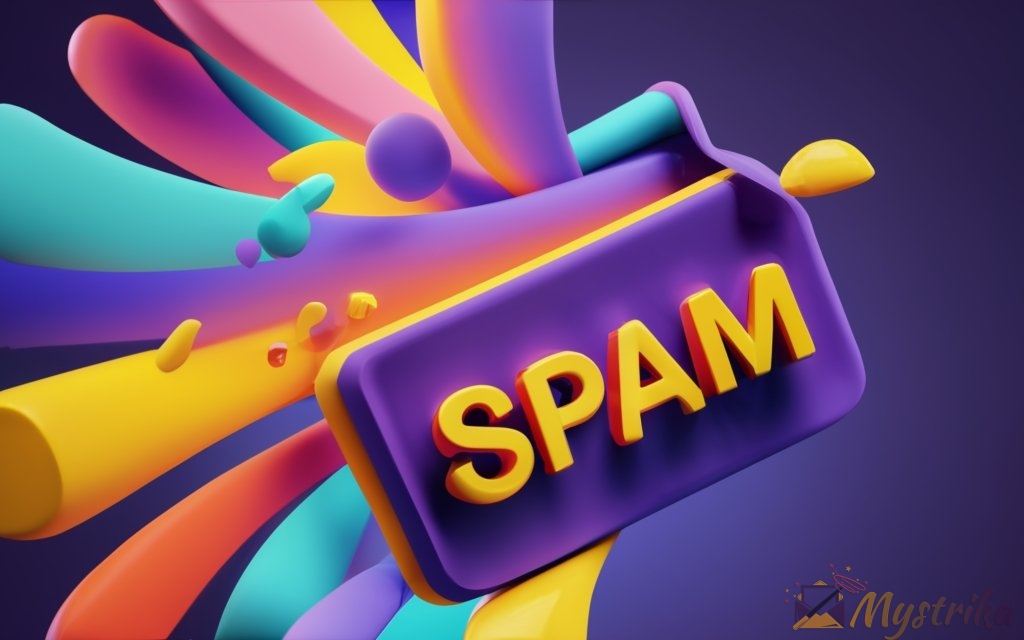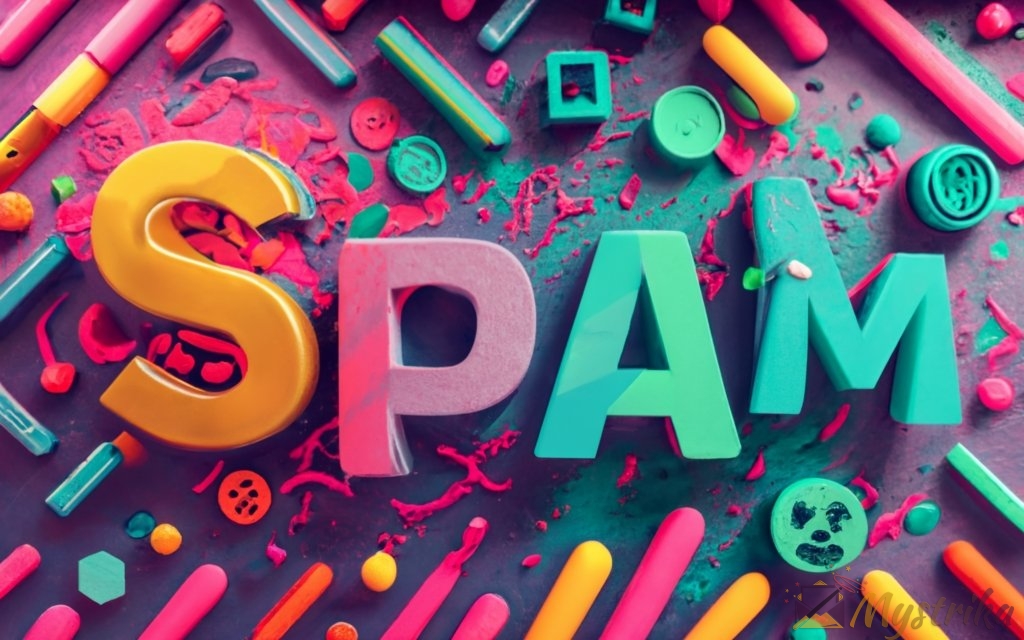Is your email marketing ROI being torpedoed by pesky spam filters? Learn how to stop Mailchimp emails from unfairly ending up in junk folders.
This comprehensive guide will reveal insider techniques to optimize Mailchimp deliverability, avoid false spam detections, and rescue your campaigns from inbox oblivion.
Why Do Mailchimp Emails End Up in Spam Folders?
Even if you have an engaged email list full of subscribers who want to hear from you, Mailchimp’s emails sometimes end up in the dreaded spam folder.
This unfortunate phenomenon happens due to several key factors:
Mailchimp’s Reputation and Deliverability Issues
Mailchimp is one of the world’s most popular email service providers, with millions of users sending billions of emails per month. However, with such high volume, Mailchimp has developed a reputation of being associated with spammers.
According to Email Deliverability Report, Mailchimp only has a 72.15% inbox placement rate, meaning over 25% of its emails go to spam.
This is likely because some Mailchimp users don’t follow proper email best practices. When just a few bad apples send spam or improperly collected email lists, it damages Mailchimp’s domain and IP reputations.
As a result, the major email providers like Gmail and Outlook automatically filter more Mailchimp emails as suspicious, resulting in higher spam rates.
Not Setting Up Proper Email Authentication
One key reason Mailchimp emails get flagged as spam is a failure to set up proper email authentication protocols like SPF, DKIM, and DMARC.
These authentication mechanisms help prove that the emails are really coming from your authorized domain and server.
Without proper authentication, spam filters have a hard time verifying the emails’ authenticity and are more likely to lump them in with scam emails from spammers.
Even Mailchimp’s own support reps recommend having SPF and DKIM set up to avoid the spam folder.
Using Suspicious Content That Triggers Spam Filters
Spammers tend to use certain types of content and messaging in their scam emails that spam filters now watch out for.
If your Mailchimp emails contain any suspicious elements like:
- Clickbait subject lines (“You Won’t Believe This!”)
- Too-good-to-be-true offers (“Earn $10,000/month working from home”)
- Sexual language or imagery
- Overuse of emojis, ALL CAPS, or excessive exclamation points!!!!!
Then the spam filters will see those emails as matching their spam criteria and automatically file them away in the spam folder before recipients ever see them.
Be careful to avoid these spammy content patterns in your emails to prevent falsely triggering the filters.
Relying on Shared IP Addresses Associated With Spammers
Many Mailchimp users start out relying on shared IP addresses Mailchimp provides as the default option.
The problem is, hundreds or thousands of other Mailchimp customers share the same IP addresses to send their emails. If any one of them engages in spamming activities, it can cause those shared IPs to be flagged and blacklisted.
Then all other innocent users sending from those same IPs suffer the consequences of having their emails automatically filtered as spam too.
It only takes one bad apple to ruin the bunch. So relying on shared IPs exposes you to potential spam blocking if any other customers misuse them.
The solution is upgrading to dedicated IP addresses fully under your control, disconnected from the reputations of other senders.
In short
As you can see, through no direct fault of your own, several factors related to Mailchimp’s design and reputation can unfortunately cause perfectly legitimate emails to end up flagged as spam.
The good news is there are steps you can take to properly authenticate your emails and avoid suspicious content, keeping more of your Mailchimp newsletters out of the dreaded spam folder.
Later in this guide we’ll cover advanced deliverability strategies to reduce your Mailchimp spam rate. But first, let’s look at why you should care about optimizing deliverability in the first place.

Consequences of Having a High Spam Rate
Now that you know what causes Mailchimp emails to end up in the spam folder, let’s look at why you should care and the negative consequences of ignoring deliverability issues.
Lower Open and Click-Through Rates
The most obvious impact of having your Mailchimp newsletters frequently sent to spam is that fewer subscribers will open and read them.
Open rates are a key email marketing metric, as you can’t drive any further action without the recipient first opening your message.
Studies show that as much as 98% of messages sent to the spam folder go unopened. So sending to spam equates to emails sent into a black hole, never to be seen again.
Any links, offers, or calls to action included in the email are also unlikely to generate clicks if no one opens it out of the spam folder.
One study by ReturnPath showed messages in the spam folder had click-through rates about 90% lower than those sent to the inbox.
With such huge decreases in open and click rates, having a high spam rate defeats the purpose of email marketing entirely.
Higher Bounce and Unsubscribe Rates
Not only does sending to spam tank open rates, but it can also increase other negative email engagement metrics.
Recipients who realize your emails ended up in spam are more likely to report them as junk. Too many spam reports will lead ISPs to classify your sender domain and IP addresses as spammers.
Once blacklisted by ISPs as a spammer, your emails are likely to start bouncing or getting automatically rejected without even reaching recipients’ inboxes.
According to SurveyMonkey, the average industry bounce rate is between 10-20%, but blacklisting can drive this up to 50%.
Frustrated recipients who constantly see your emails in spam may also unsubscribe at higher rates. Experian found emails in spam had 67% higher unsubscribe rates.
Losing subscribers and having emails rejected defeats the purpose of email marketing. But both are common side effects of having spam folder issues.
Damage to Sender Reputation and Deliverability
High spam rates don’t just impact open and click metrics – they can also do longer term damage to your domain and IP reputation.
Each spam report from recipients negatively impacts your sender score with major email providers. Too many dings to your reputation, and you’ll join spammer blacklists and be labeled as high risk.
According to SparkPost, 79% of email providers use sender reputation to filter emails, so this is significant.
Once you have a poor domain reputation, it becomes a vicious cycle. More of your email is automatically flagged as spam based on past spam complaints. This increases spam complaints from frustrated recipients, further lowering your reputation.
Recovering from a damaged sender reputation takes a lot of work to prove you are no longer a spam risk.
Fewer Conversions and Lost Revenue
At the end of the day, the purpose of your email marketing is driving conversions and sales revenue for your business.
When a significant portion of your Mailchimp newsletters end up in spam folders, fewer subscribers read your content and special offers. This directly translates to lower conversion rates and lost profits.
According to Inbox Insiders, emails in the spam folder generate 52% lower conversion rates.
For ecommerce companies, they found emails in spam had a 28% lower transaction rate and generated 36% less revenue.
The bottom line? Mailchimp deliverability issues can sink your email marketing ROI.
Now that you see all the harmful effects of high spam rates, it should be clear why you must prioritize optimizing your Mailchimp delivery.
In the next section, we’ll start covering specific steps you can take to keep more emails out of the spam folder.

How to Configure Mailchimp to Avoid the Spam Folder
Now that you know the root causes and consequences of Mailchimp deliverability issues, let’s explore specific steps you can take to resolve them.
Optimizing your Mailchimp setup is crucial to keeping your emails out of spam folders and improving email engagement.
Set Up SPF, DKIM, and DMARC Authentication
The first major change you should make is setting up proper email authentication protocols on your sending domain. As discussed earlier, lack of authentication is a leading cause of spam filtering issues.
SPF
SPF (Sender Policy Framework) works by allowing you to publish authorized sending IP addresses for your domain in the DNS records.
This lets recipients verify the sending IPs match your domain, proving the emails legitimately came from your domain.
Mailchimp has step-by-step instructions to correctly configure SPF based on your account setup.
Generally, you will create a TXT record in your domain’s DNS management that lists include:servers.mcsv.net to authorize Mailchimp’s servers.
Once set up, you can validate your SPF to confirm it is working correctly.
DKIM
DKIM (DomainKeys Identified Mail) works by encrypting your email headers with a public key to verify the message content is unchanged.
Mailchimp again provides exact steps to set up DKIM for your account.
It involves creating CNAME records in your DNS containing a public key Mailchimp provides you.
After publishing the CNAME records, you can use a DKIM validator to confirm DKIM is functioning.
DMARC
DMARC (Domain Message Authentication Reporting and Conformance) takes authentication a step further by telling receiving servers what to do if SPF or DKIM fails.
Mailchimp has instructions for configuring DMARC with your account.
You create another TXT DNS record stating your DMARC policy. Common settings are p=quarantine to send failed emails to spam or p=reject to bounce emails entirely.
Regularly check your DMARC aggregate reports to catch authentication issues.
Following these steps to implement SPF, DKIM, and DMARC provides the maximum protection against impersonation and forgery, critical to avoiding false spam classifications.
Use Dedicated IP Addresses Instead of Shared
As outlined earlier, Mailchimp’s shared IP system means if anyone sends spam from your shared IP pool, it damages deliverability for all other users sharing those IPs too.
The solution is to purchase dedicated IP addresses owned solely by your account. This isolates you from the actions of other Mailchimp customers.
Dedicated IPs also allow building a strong IP reputation uniquely tied to your business instead of Mailchimp’s average scores.
Mailchimp charges $20 per dedicated IP address per month, with a minimum requirement of 5 IPs. So you’re looking at an additional $100/month investment.
The cost may seem high, but it can pay for itself if it means your emails reliably reach the inbox rather than spam folder.
Consider starting with a small number of dedicated IPs to limit costs. You can slowly grow your dedicated IPs as needed to maintain email volume.
Carefully Craft Email Content to Avoid Spam Triggers
Next, audit the content of your Mailchimp emails. As discussed earlier, hyperbolic claims, excessive emoji use, and other aggressive tactics will trigger extra spam scrutiny.
Here are some tips for optimizing content to avoid false spam tagging:
- Write clear, concise copy focused on informing more than “hyping up”
- Limit use of ALL CAPS, repeated exclamation points, and emojis
- Avoid common spam trigger words like “free,” “buy now,” “limited time,” etc
- Include text explaining who you are, your relationship with the recipient, and what you’re offering
- Use passive voice to tone down aggressive claims
- Personalize content with merge tags to demonstrate existing relationship
Most importantly, put yourself in your subscribers’ shoes. Craft content you would genuinely find useful rather than annoying or far-fetched.
Spam filters judge messages on expectations of a normal human. So the more you optimize for authentic value vs spammy hype, the better chance of passing through filters undetected.
Limit Email Frequency and Maintain List Hygiene
Sometimes recipients report emails as spam simply because you’re sending too much volume or emailing people who didn’t really sign up.
Here are best practices to avoid triggering spam complaints:
- Only email users who distinctly opted in and remember subscribing
- Remove inactive subscribers who have not opened in 6+ months
- Segment your list based on engagement and tailor content accordingly
- Set up re-engagement campaigns to pull in dormant subscribers
- Limit promotional send frequency to 2-4 emails per month
- Use Mailchimp groups and segmentation to target relevant content
- Provide an easy unsubscribe link in each email
By keeping your lists clean and send volume reasonable, recipients have no reason to feel you’re spamming them.
Use Transactional Emails Over Marketing Emails When Possible
Transactional or automated emails like receipts, shipping confirmations, password resets, etc are less likely to be marked as spam because they’re expected and helpful.
Mailchimp found transactional emails had 4x higher open rates and got 50% fewer abuse reports than promotional newsletters.
So when applicable, rely more on transactional triggers vs general marketing blasts. Sending emails users want to receive based on actions they took reduces feeling spammed.
You can set up various transactional automations in Mailchimp using the “Automation” tool. Identify key lifecycle touchpoints ideal for automated follow-up.
Leverage Mailchimp Deliverability Tools and Reports
Mailchimp provides several tools to monitor email engagement and spam complaints. Use these to catch deliverability issues early before they escalate.
Important reports include:
- Email Activity – Check open, click, and unsubscribe rates for abnormal spikes indicating deliverability problems.
- Geography – Review open and click rate heat maps by country. Many opens in spam-heavy regions like Russia or China could indicate inbox placement issues.
- Spam Report – Details total spam complaints for your account so you can respond before blacklisting.
- Bounce Summary – Spikes in bounce rates are another red flag for potential blacklisting.
- Email Client Activity – Unusually high “Unknown” email client percentages likely means emails going to spam.
Regularly monitoring deliversbility metrics allows quickly optimizing and addressing problems as they emerge.
Those are the major best practices to optimize your Mailchimp setup for deliverability. Taking the time to properly authenticate emails, eliminate spam content risks, and follow sending best practices will pay off with higher inbox placement and less spam headaches.
In the next sections we’ll get into more advanced strategies for reducing your Mailchimp spam rating even further.

Advanced Strategies to Further Reduce Spam Risk
The previous section covered fundamental best practices to optimize Mailchimp for deliverability.
In this section, we’ll explore some more advanced techniques for further reducing your Mailchimp spam rate.
Implement a Domain Warmup Strategy
One advanced technique is gradually “warming up” your sending domain when starting to use Mailchimp for a new website.
The warmup process involves slowly ramping up your sending volume over 2-4 weeks, rather than blasting at full volume out the gate.
This allows spam filters to recognize your domain as legitimate before hitting them with larger email volumes. Quickly sending massive quantities of email from a new domain is seen as suspicious.
Here is an effective domain warmup strategy:
- Week 1: Send 1 email campaign to 50 recipients
- Week 2: Increase to 2 emails sent to 150 recipients
- Week 3: Ramp up to 3 emails and 1,000 recipients
- Week 4: Finally send your max volume of emails
Take it slow and focus on high engagement over raw quantity when warming up a domain. This builds positive sender reputation and teaches spam filters you’re not a risky sender abusing a fresh domain.
Use Mailchimp Groups and Segmentation to Target Relevant Content
Spam filters judge relevancy when scoring emails. The more targeted your content, the less likely to be considered spam.
Leverage Mailchimp Groups and segmentation tools like Tags, Interest Categories, and Merge Tags to slice your audience and send hyper-relevant content.
Some ways to tap into Groups and Segments:
- Send new product releases just to purchasers of related products
- Promote an upcoming webinar to engaged subscribers who have attended past events
- Target subscribers in specific regions with localized offers and event invites
- Crafted segmented autoresponder tracks for website visitors, purchasers, etc
Taking the time to divide your list and customize content demonstrates you respect subscribers and aren’t spam blasting.
Enable Link Wrapping to Avoid Suspicious URLs
Spam filters closely analyze links included in emails when judging legitimacy.
To avoid scrutiny for long or complicated URLs, enable Mailchimp’s Link Wrapping feature.
Link Wrapping obscures original URLs behind a mailchimp.com/links/ wrapped version. This prevents spam traps from seeing and following your links.
For example, with Link Wrapping enabled, this link:
https://reallylongwebsitedomainname.com/blog/post?utm_source=newsletter&utm_medium=email&utm_campaign=time-sensitive-offer
Would become:
https://mailchimp.com/links/reallylongwebsitedomainname
Link Wrapping adds a layer of protection to conceal your links from spam filter detection.
Test and Optimize Subject Lines to Improve Engagement
Your email subject line offers another opportunity to avoid spam scrutiny.
Testing different subject line phrasings with A/B testing can help identify what resonates best with your audience.
Subject lines personalized using merge tags see 21% higher open rates.
Shorter subject lines around 30-45 characters perform better, as do questions and urgency cues like “limited time”.
Avoid ALL CAPS, symbols, and other spammy tactics in lines. Use clear, compelling phrasing targeted to your recipients.
Higher open rates signal relevancy to spam filters. So optimizing subject lines is worthwhile to improve inbox placement.
Get Prior Recipient Consent and Document Permission
To guarantee no subscribers report your emails as spam, only email recipients who have explicitly opted in to receive your messages.
A clear opt-in process like a newsletter signup form ensures informed consent. Always avoid purchasing third-party lists.
Document when and how subscribers opted in for future reference in case of spam complaints.
Having proof of opt-ins protects you from allegations of unauthorized sending should deliverability issues arise.
Leverage Mailchimp Automations for More Personalized Email
Mailchimp’s automation workflows allow sending tailored emails based on subscriber actions.
This triggers relevant, expected messages instead of general email blasts.
Some automation ideas:
- Welcome sequence when a contact joins your list
- Browse abandonment flows if someone leaves your site without purchasing
- Re-engagement campaigns for inactive subscribers
- Winback messages for past customers
The more you customize content with automations, the less spam risk.
Apply these advanced strategies together with the general deliverability best practices covered earlier, and you’ll be well equipped to minimize false spam detections.
While frustrating, with diligence you can overcome Mailchimp’s deliverability limitations for successful email marketing.
Next let’s explore signs it may be time to switch from Mailchimp to an alternative ESP.

When to Consider Switching From Mailchimp to Another ESP
While Mailchimp is highly popular, it isn’t for everyone. Despite your best optimization efforts, for some businesses it makes sense to switch ESPs.
Here are signs it may be time to move from Mailchimp to an alternative service:
If Deliverability Doesn’t Improve After Optimization
First, you should thoroughly attempt the spam avoidance strategies outlined in this guide before deciding to leave Mailchimp.
However, if after 2-3 months of optimization your Mailchimp deliverability does not meaningfully improve, it may be the right call to switch ESPs.
Consistently high spam rates or poor sender reputation could indicate fundamental incompatibility between your business and Mailchimp’s systems.
No amount of optimization may resolve underlying mismatches in frequency, content style, or subscriber behaviors triggering filters.
When deliverability plateaus despite your best efforts, a fresh start with a new ESP is warranted.
If Support Cannot Provide Solutions for Your Use Case
As an email marketer, you expect your ESP’s customer support to provide expertise guiding your deliverability efforts.
After already optimizing based on standard Mailchimp advice, reach out to their deliverability team if your spam rates remain high.
Clearly explain your situation and optimization attempts. If support is unable to offer new viable strategies to improve your standing, this signals a dead end.
Lack of adequate support for your needs, despite investing heavily in deliverability, means it’s time to switch providers.
If Other ESPs Demonstrate Superior Deliverability at Similar Pricing
Research competitor ESPs to compare deliverability benchmarks side-by-side.
ESPs like SendGrid, Mailgun, SparkPost, and MailerLite all publish third-party verified spam rate and inbox placement metrics.
If other affordable providers consistently achieve 10-30% better inboxing rates, you should strongly consider their services over Mailchimp.
Superior deliverability stats from alternative ESPs, verified over months or years, provide quantitative reason to switch.
If Your Business Has Advanced Deliverability Needs Mailchimp Can’t Meet
As a mass market tool, Mailchimp lacks some advanced features power users need for maximizing deliverability.
For example, you can’t fully control your IP warm-up process as you can with more senior-oriented ESPs.
If you send enough volume to necessitate dedicated IPs or advanced routing control, Mailchimp likely falls short.
Evaluate whether your business has now outgrown Mailchimp’s core feature set. Switching to a specialized high-volume ESP often pays dividends.
The decision to leave any service you’ve invested time in is never easy.
But if Mailchimp is actively hampering your deliverability despite your optimization efforts, it becomes necessary.
Prevent further wasted time and revenue by aligning with an alternative ESP better suited for your email needs.
Next let’s review the top Mailchimp replacements worth considering for improved email deliverability.

Alternative ESPs to Consider for Improved Deliverability
If you decide to move on from Mailchimp due to ongoing deliverability issues, you’re probably wondering which alternative provider to choose.
Remember : These platforms are built for Marketing and Transactional emails, but not for Cold Emails. Mystrika on the other hand is specifically devoted for Cold Email Outreach.
There are several respected ESPs worth evaluating as a Mailchimp replacement offering excellent deliverability.
SendGrid
SendGrid is a popular enterprise-grade ESP prized for reliability.
They deliver over 60 billion emails per month, with leading inbox placement rates thanks to meticulous compliance.
SendGrid reports 99%+ inboxing across Gmail, Outlook, Yahoo and other major providers.
They offer robust analytics allowing deep diagnosis of deliverability. granular controls like IP pooling give power users more optimization ability.
SendGrid starts at $15/month for the Essentials plan including 40k monthly emails.
For high-volume reliability, SendGrid is a wise Mailchimp alternative. But the interface lacks simplicity for beginners.
Mailgun
Mailgun is another developer-friendly SMTP platform known for security and deliverability.
They send over 150 billion emails monthly with an average inbox placement rate above 99% as well.
Mailgun provides 10k free emails monthly, then paid plans from $35/month for 50k emails including all deliverability features.
Mailgun allows using a dedicated IP address from the first paid tier. Their monitoring tools provide visibility into what spam filters see.
While great for programmers, Mailgun lacks drag-and-drop email builders which could deter less technical users.
SendInBlue
SendInBlue balances power with simplicity. They deliver 1 billion emails monthly.
Plans start at $39/month for 140k emails including advanced automation with visual editor.
Their “Deliverability Tools” feature provides real-time inbox placement monitoring and analysis for optimizing against spam.
SendInBlue states 95%+ global inbox rates. Support includes deliverability experts to maximize reach.
While affordable and easy to use, SendInBlue trails leaders in large enterprise-level volumes. But they are ideal for growing email programs.
Amazon SES
Amazon SES (Simple Email Service) is Amazon’s scalable email platform.
Pricing is pay-as-you-go based on usage volume, starting at $0.10 per 1000 emails sent.
Boasting 99.9% inbox placement, SES prioritizes compliance to guarantee reliable delivery.
Pros are affordable bulk sending and leveraging Amazon’s trusted infrastructure.
Cons are technical complexity compared to typical ESPs and lacking native email design tools.
Mailmodo
Mailmodo provides an emerging all-in-one alternative to Mailchimp.
Their unique benefits include drag-and-drop interactive email building and built-in ecommerce features.
Deliverability is a core focus, ensuring high inbox placement across Gmail, Outlook, Yahoo and more.
Mailmodo starts with a free plan, then paid tiers from $13/month including full deliverability functionality.
Key advantages over Mailchimp are better spam protection and fewer blacklisting complaints according to user reviews.
Mailmodo’s deliverability expertise and personal support help avoid frustrating spam folder issues.
Those are top Mailchimp alternative picks guaranteed to achieve higher inbox placement through dedicated deliverability capabilities.
Each service takes compliance seriously, combining advanced tools with proven best practices for avoiding spam folders consistently.
Match needs like email design, segmentation, automation, and support requirements against an ESP’s strengths when deciding for maximum effectiveness.
Any of these respected providers will empower your business to finally gain control over stubborn deliverability problems.
Wishing you best of luck in your search for an ideal email partner equipped to meet your needs!

The Takeaway: Prioritizing Deliverability Is Essential
By now it should be clear that optimizing email deliverability is a mandatory ingredient for successful email marketing.
Let’s recap core lessons and takeaways from our deep dive into avoiding Mailchimp spam problems:
Deliverability Directly Impacts Email Marketing Results
Deliverability is the single biggest driver of email campaign results.
If your emails consistently go to spam instead of the inbox, all your carefully crafted content and offers will be wasted.
Dedicate time each month to studying your deliverability metrics and diagnosing issues. This step is just as essential as writing great copy or sending engaging offers.
Consider deliverability your #1 objective. Once your emails reliably hit the inbox, the rest of your strategy will bear fruit.
Avoiding the Spam Folder Requires Ongoing Optimization
There is no “set it and forget it” with deliverability.
Spammers constantly shift tactics, and spam filters evolve in response. You must vigilantly stay ahead of the curve.
Regularly optimize your sending domain reputation, email content, subscriber segments, and other factors covered in this guide.
Don’t rest on your laurels if your emails currently land in inboxes. Ongoing fine-tuning is required to maintain your hard-earned deliverability.
Leverage All Available Tools and Best Practices
This guide outlined numerous tools and strategies for improving Mailchimp deliverability.
But they only work if put into practice consistently! Don’t skip steps.
Lean on email authentication protocols, dedicated IPs, content optimization, subscriber list management, and advanced options like IP warmups.
Follow email marketing best practices, and tap Mailchimp’s features fully to maximize inbox placement.
Be Prepared to Switch ESPs If Issues Persist
Sometimes all the optimization in the world can’t overcome fundamental ESP deliverability shortcomings.
If you’ve applied every tool possible and spam woes remain, don’t bang your head against the wall.
Consider switching providers as the necessary next step, choosing an alternative with specialization in reliable delivery.
In email marketing, the ESP choice directly fuels success. Don’t tolerate ongoing failure to reach inboxes.
We covered a lot of ground explaining Mailchimp spam troubleshooting best practices
The core principles apply beyond Mailchimp as well to master professional email marketing fundamentals.
Prioritize inbox delivery through perpetual optimization and alignment with an ESP committed to compliance.
That discipline will serve any business in achieving results and avoiding wasted marketing effort.
Thanks for reading and hopefully you’re now equipped to stop Mailchimp emails from ending up in the dreaded spam folder!
Summary: How to Stop Mailchimp Emails From Going to Spam
Preventing Mailchimp emails from going to spam is crucial for successful email marketing. Here are the key lessons:
- Understand the causes – Mailchimp’s reputation, lack of authentication, suspicious content, and shared IPs often trigger false spam detections.
- Optimize your setup – Use dedicated IPs, implement SPF/DKIM/DMARC, write human-readable content, limit send frequency, and leverage Mailchimp’s deliverability tools.
- Apply advanced techniques – Warm up IP addresses, segment contacts, wrap links, optimize subject lines, document opt-ins, and leverage automations.
- Monitor results – If spam issues persist despite optimization, consider switching to an alternative ESP purpose-built for deliverability like SendGrid, Mailgun, or Mailmodo.
- Make deliverability a priority – Maintaining inbox placement requires constant fine-tuning as filters evolve. Dedicate time to mastering email compliance.
Consistent inbox delivery is the foundation of an effective email marketing strategy. Use these takeaways to stop Mailchimp emails from ending up in spam.
Frequently Asked Questions
Q: Why do Mailchimp emails end up in spam?
A: Main reasons include Mailchimp’s sender reputation, lack of email authentication, suspicious content like spam trigger words, and using shared IP addresses associated with other spammers.
Q: How can I authenticate my Mailchimp emails?
A: Set up SPF, DKIM, and DMARC email authentication to verify your emails come from a legitimate source. Follow Mailchimp’s guides to properly configure these protocols.
Q: Should I use dedicated or shared IP addresses?
A: Dedicated IPs isolate you from other Mailchimp users’ reputations. But they cost more. Start with a few dedicated IPs if possible, then scale up as your send volume increases.
Q: What if optimization doesn’t work?
A: If spam issues continue despite optimizing authentication, content, IPs, and following Mailchimp’s advice, consider switching to an alternative ESP with better deliverability rates like SendGrid or Mailmodo.
Q: How often should I check my email reports?
A: Check your Mailchimp email activity, spam complaints, bounce rates, and other reports weekly. Watch for unusual spikes that indicate deliverability problems. Address issues promptly.
Q: Should I warm up new IP addresses?
A: Yes, gradually ramp up sending new IPs or domains over weeks. Avoid blasting high volumes out of the gate, which looks suspicious. Take it slow to build reputation.
Q: How can automations help?
A: Leverage Mailchimp automations to send more relevant, personalized emails based on subscriber behaviors. This reduces spam risk vs general blasts.
Q: What happens if I don’t fix deliverability problems?
A: Consistently low inbox placement means huge drops in email metrics like open rates, clicks, and conversions. Serious spam issues could also get your account suspended.

